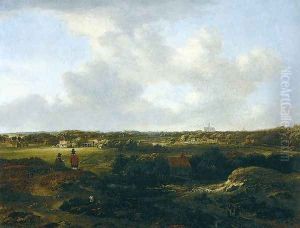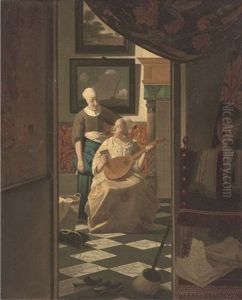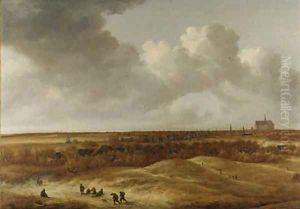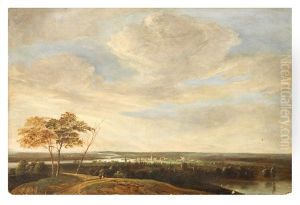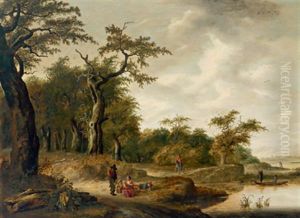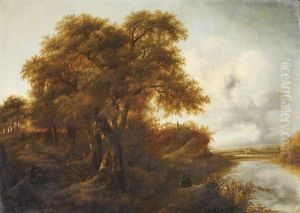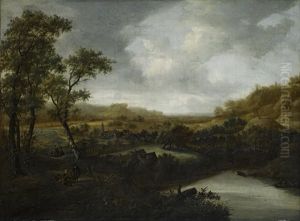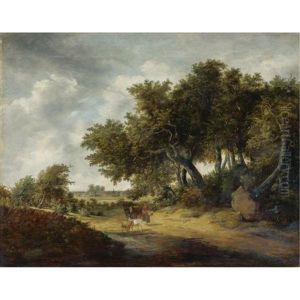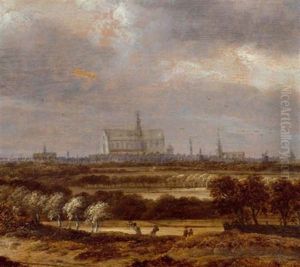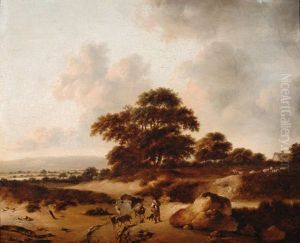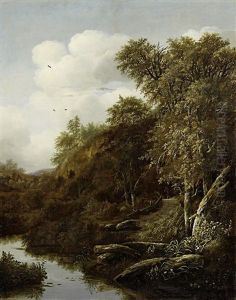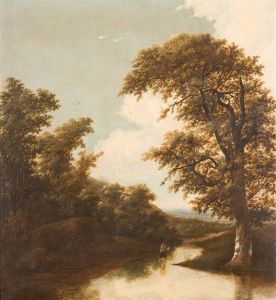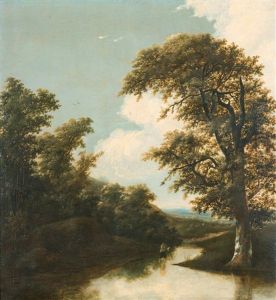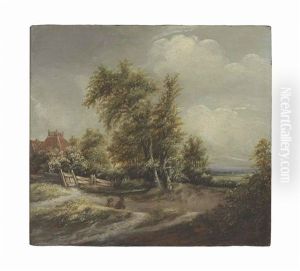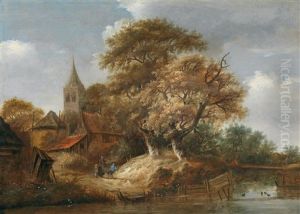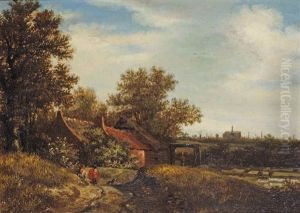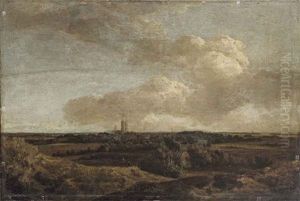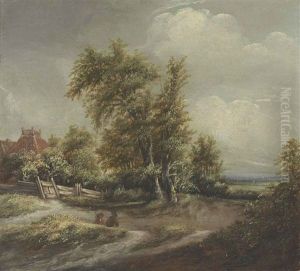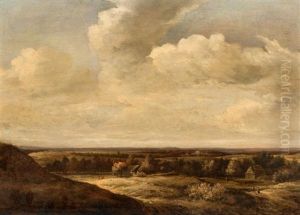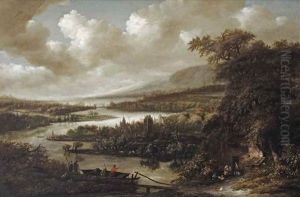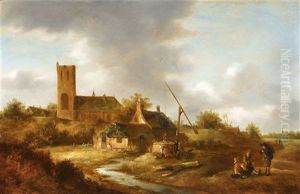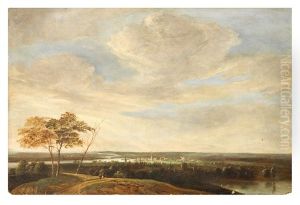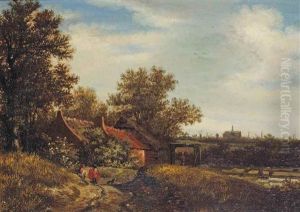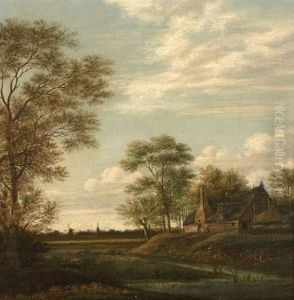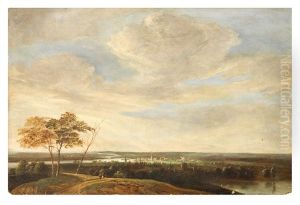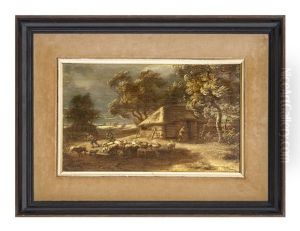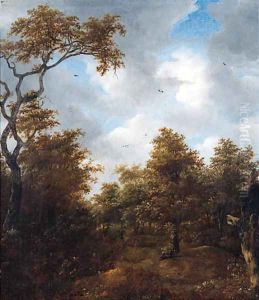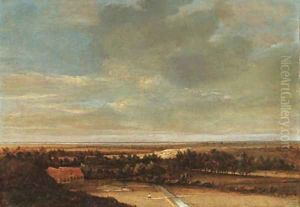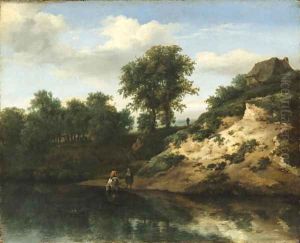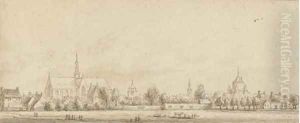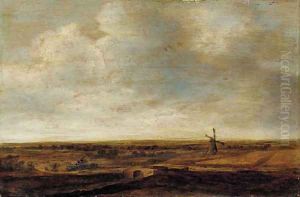Jan The Younger Vermeer Van Haarlem Paintings
Jan Vermeer van Haarlem the Younger, not to be confused with the more famous Johannes Vermeer from Delft, was a Dutch Golden Age painter who specialized in landscape paintings and works depicting everyday life. Born in 1628 in Haarlem, Netherlands, he was the son of Jan Vermeer van Haarlem the Elder, also a painter. Coming from a family of artists, he was well-positioned to receive training and support in his craft from an early age.
Vermeer van Haarlem the Younger's early work often reflected the influence of his father and the Haarlem school of painting, which was characterized by a fine attention to detail and a preference for naturalism. His landscapes often included elements such as rustic cottages, dunes, and woodland scenes that were typical of the region's topography. He also painted genre scenes that depicted the daily activities of the peasantry, a common subject among Dutch Golden Age artists who sought to capture the essence of life in the Netherlands during this period.
Despite sharing a name with the famous Johannes Vermeer, Jan Vermeer van Haarlem the Younger did not achieve the same level of recognition. Nevertheless, his work was appreciated for its own merits, and he contributed to the rich tapestry of Dutch painting during the 17th century. His paintings are known for their tranquil and pastoral quality, often bathed in a warm, glowing light that highlights the serene beauty of the Dutch countryside.
Jan Vermeer van Haarlem the Younger's career spanned several decades, and he continued to paint until his death in 1691. His legacy is preserved in the collections of various museums and in the annals of Dutch art history, where he remains a figure of interest to those studying the lesser-known artists of the Golden Age. His works continue to be studied by art historians and enjoyed by art enthusiasts, offering a glimpse into the landscape and culture of 17th-century Netherlands.
